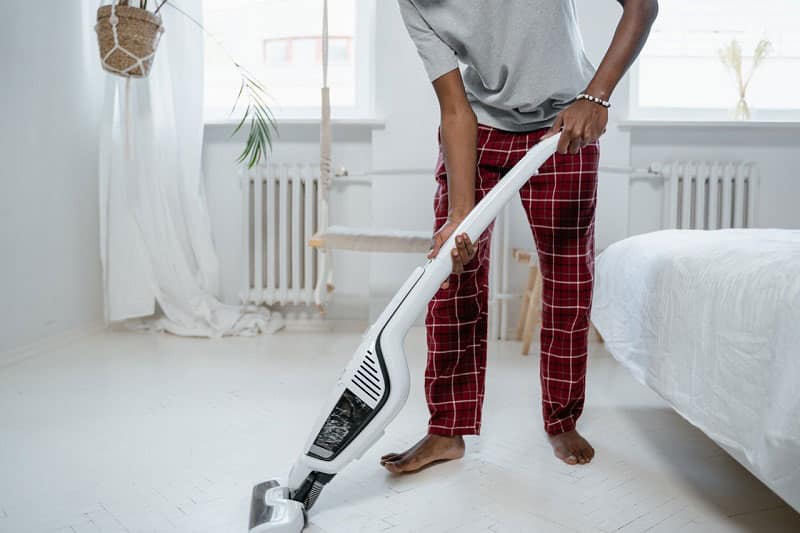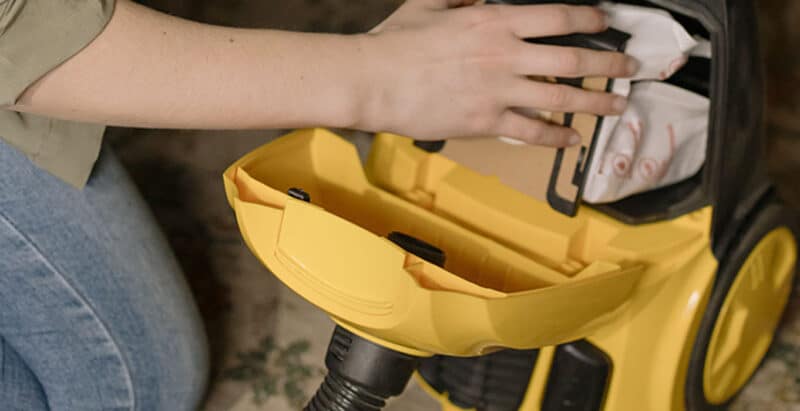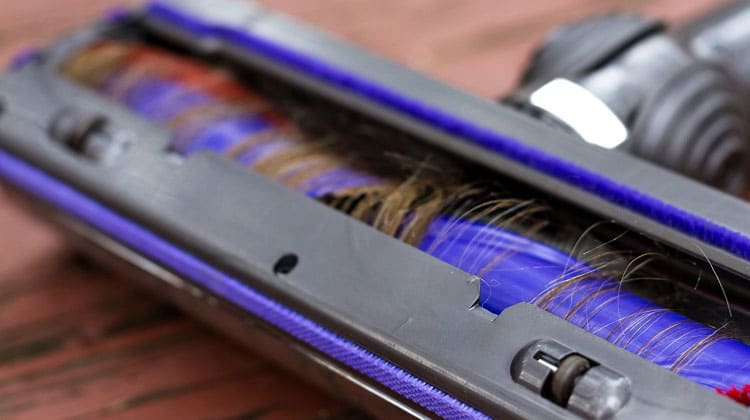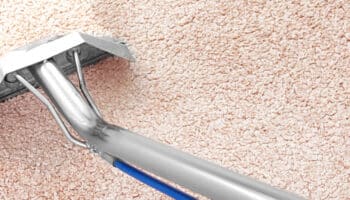A vacuum cleaner belt that keeps breaking indicates there is something amiss with your trusty machine. Vacuum cleaner belts will break for several reasons. However, knowing what to do before you have a problem may prevent you from ever having to stop in the middle of cleaning your home to repair a broken vacuum cleaner belt.
Vacuums are the same whether they’re upright, made in one-unit, or cassette-style units with separate wands. They both have vacuum units and powered heads with brush rollers that help release dirt from the surfaces in your home and vacuum it away.

The roller brush of your vacuum is attached to an electric motor with a rubber belt. Unfortunately, the roller will not spin if the belt breaks, rendering this attachment to your machine primarily useless.
Read on to learn why your vacuum cleaner is breaking belts and how to maintain your machine so that it does not happen.
Signs that Your Vacuum Cleaner Belt is Going Bad
They say that an ounce of prevention is worth a pound of cure, and machines tend to test that theory. When they work correctly, they are a wonderful thing, but the frustration can make a mess of your day when they break.
There are a few signs that the belt on your vacuum cleaner is not working right before it reaches the point of breakage. Vacuum cleaners are loud by nature, but they make sounds that are normal for such an appliance.
Replacing the belt of a vacuum is not difficult. However, if your vacuum displays any of the following behaviors, you may need a new belt.
- Does your vacuum sound like a screaming banshee all of a sudden? Check your belt.
- If your vacuum smells of burning rubber, check your belt.
- If your vacuum is not cleaning as it should clean, then you need to check its belt.
#1 Reasons Your Vacuum Cleaner Keeps Breaking Belts
The brush roller in the powerhead of your vacuum sits in bearings at either end. The roller brush and bearings are constructed so that the belt’s pressure keeps the roller in place by applying tension. If any of these parts become misaligned due to grit, fur, hair, string, or other trash, they will protest and do so quite loudly sometimes.
Taking care not to vacuum up large objects and carpet strings will help keep your vacuum clear of debris. Still, it would be best to clean it before and after using it to be ready to go when you need it. You use your vacuum to rid your home of dirt and dust, so it stands to reason it will also get dirty and need cleaning.
#2 Burning a Vacuum Cleaner Belt can Cause it to Break
With debris wrapped around the roller brush, a dirty vacuum cleaner powerhead can stop the roller from turning while the belt still spins away. The friction can cause the belt to burn and break.
Running over things in our home that causes the roller brush to stop spinning can also cause the belt to burn. Although it may not fail on you at that moment, overheating the belt will cause it to weaken and fail sooner than it might otherwise.
#3 Keep Your Vacuum Clean
That means the entire machine, not just the roller brush. As a result, a clean machine will work more efficiently and will cause you fewer problems. For example, when a vacuum gets full, the debris you are trying to vacuum does not flow freely through the machine. Thus, the dirt and dust can clog the roller brush’s moving parts and restrict the suction of your vacuum cleaner.

Be sure to clean the bag of your vacuum when it is full and the trash receptacle of your bagless vacuum every time you use it. Leaving trash in it for a prolonged period can cause it to cake and get sticky. This is also true for dirt left on your vacuum’s roller brush, as dry, caked dirt on the rollers can cause friction.
Suppose you remove any string, hair, fur, leaves, or other trash from the roller brush of your vacuum cleaner every time you put it away. In that case, you can prevent continually breaking belts.
#4 Keep a Spare Belt and Install it Properly
Your vacuum may come with extra belts, or you may need to buy them, and every model of vacuum uses a different belt. Although vacuums all work in the same way, they rarely share the same parts. Therefore, be sure to have a spare belt and bags for your vacuum.
You can order spare belts and bags from where you bought your vacuum or order them online. The information you will need to make this purchase is the make and model of your vacuum or the part number, which is often stamped on the belt and bag.
If you want to get any replacement part – or see how much one would cost – click to enter your model number in the search bar below. Our partners at AppliancePartsPros stock almost every part with free guides on how to install them.

When installing the belt, clean the motor spindle and ensure it is free of hair and string, the bearing ends, and the roller brush. Suppose you try to reassemble these parts before cleaning them. In that case, the roller brush may not sit in its bearings, and the resulting misalignment could cause the belt to break again.
#5 Change the Belt on a Regular Schedule
If you make changing your belt every few months a normal practice, you may find it better than waiting for it to fail. Even if you do not change it that often, be sure to clean the brush head of your vacuum, the brush roller, and its guides every time you use your machine.

It is unnecessary to take the entire unit apart; however, you need to ensure no strings, hair, or other objects are wrapped around the roller brush. Keeping these parts free of debris lessens the tension placed on the belt and all of the different working parts of your vacuum.
Any foreign object wrapped around the length of your vacuum roller brush can prevent it from cleaning, as it should. The roller brush sweeps dirt from your carpet while simultaneously brushing the pile. When there is string and hair wrapped around the brush, it cannot do its job correctly.
#6 Vacuum Cleaners Without Belts
A few direct drive vacuums on the market have chosen a different way to spin the roller brush on their vacuums. Instead of a belt, they connect the motor directly to the roller brush. Thus, there is no belt slippage with the direct drive because there is no belt.
Before buying a new vacuum cleaner, check it out to see if the roller brush is direct drive or belt-driven. Vacuums with direct drive are often more expensive than belt-driven models. However, you can save by purchasing replacement belts and the aggravation of taking a vacuum apart to repair the belt.
Vacuum cleaner maintenance which prevents breaking belts
Like most appliances, maintenance is the key to keeping a vacuum cleaner running, as it should. The roller brush is an integral part of your vacuum, and without it, your machine is not much more than a duster for hard surface floors. Therefore, knowing how to replace the belt of your vacuum cleaner is very important.
By practicing preventive maintenance and understanding how your vacuum cleaner works, you should have few emergency events due to a broken belt. If your machine is old, and you need a new one, then a vacuum cleaner that uses neither bags nor belts may be the best option for you. This is especially so if you vacuum a lot or are cleaning an extensive area.
Keeping your vacuum cleaner maintained will keep it from being gummed up and breaking belts. If you change belts a few times a year, breaking belts will be a thing of the past.







